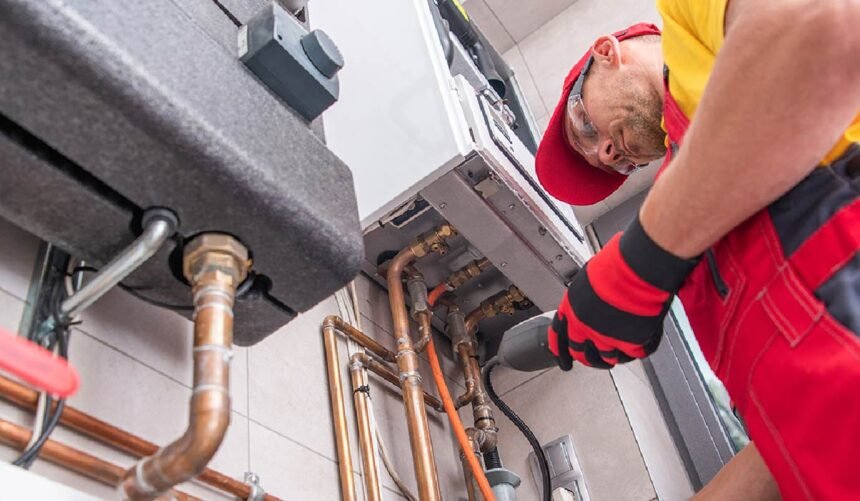Upgrading to a high-efficiency furnace is one of the fastest ways to tame winter utility bills while improving comfort, air quality, and reliability. The secret isn’t only the box you buy—it’s the way it’s sized, vented, commissioned, and maintained. Below is a comprehensive, plain-English guide to help you plan the upgrade with zero surprises.
What “High-Efficiency” Actually Means
AFUE (Annual Fuel Utilization Efficiency).
- 80% AFUE (standard): About 20% of fuel energy goes up the flue.
- 90–98% AFUE (condensing): A secondary heat exchanger pulls extra heat from water vapor in the exhaust, slashing losses to 2–10%.
Core technologies that drive savings
- Sealed combustion: Pulls outdoor air directly to the burner for cleaner, safer combustion.
- Condensing heat exchangers: Reclaim latent heat from exhaust vapor.
- ECM variable-speed blowers: Match airflow to demand, improving comfort and cutting electrical use.
- Two-stage/modulating gas valves: Deliver only the heat required, eliminating big temperature swings.
- Smart control integration: Optimizes runtimes, setback schedules, and filter reminders.
Why Installation Quality Beats Brand Hype
A high-efficiency furnace can underperform—or even cost more to run—if installed incorrectly. Proper design and commissioning are non-negotiable.
What a top-tier install includes
- Manual J load calculation: Sizes the furnace to your home’s real heat loss (not just square footage).
- Ductwork evaluation (Manual D): Verifies static pressure, supply/return balance, and leakage.
- Venting & condensate design: Correct pipe size/length, slope back to the unit, freeze-safe routing.
- Gas pressure & combustion setup: Manometer readings, clocking the meter, clean flame characteristics.
- Electrical & controls: Breaker sizing, grounding, low-voltage integrity, thermostat compatibility.
- Commissioning tests: Documented temperature rise, CO/O₂, draft, static pressure, and airflow.
If you’re looking for a professional high-efficiency furnace installation done right the first time, consider Temperature Control Systems, Inc.—they’re known for clean, code-compliant work and careful commissioning that helps homeowners capture the efficiency they paid for.
Costs, Savings, and Payback
- Upfront: High-efficiency units cost more than 80% furnaces due to additional heat exchangers, controls, and PVC venting.
- Operating: Many homes see 10–30% lower fuel use, depending on climate, building envelope, and the age/condition of the previous system.
- Electric savings: ECM blowers use far less electricity than PSC motors, especially at low, steady speeds.
- Incentives: Utility and government rebates/credits can offset a meaningful chunk of the upgrade.
- Comfort dividend: Longer, gentler heat cycles reduce hot/cold swings, noise, and drafty “blast heat.”
Pro tip: Air-sealing and attic insulation often yield the fastest payback when paired with a high-efficiency furnace.
Step-by-Step: What to Expect on Install Day
- Pre-site walk-through: Confirm equipment location, vent paths, drain routing, filter access, and thermostat placement.
- Removal & prep: Protect floors, disconnect and cap services, dismantle old transitions, and set a level platform.
- Set & connect: Fit supply/return transitions, gas line with drip leg, electrical whip, and condensate trap/drain.
- Venting: Run PVC intake/exhaust with proper slope and clearances; support at code intervals.
- Startup & tuning: Verify gas pressure, confirm combustion, measure temperature rise and static pressure.
- Documentation: Provide commissioning numbers, warranty registration, and homeowner orientation.
Avoid These Efficiency Killers
- Oversizing the furnace: Causes short cycling, noise, higher bills, and premature wear.
- Ignoring duct static pressure: Chokes airflow, forcing the blower to run harder and hotter.
- Improper condensate management: Leads to shutdowns, corrosion, or water damage.
- Skipping commissioning: Leaves efficiency and comfort on the table—get the measurements in writing.
Comfort Add-Ons Worth Considering
- Zoning: Tailors temperatures to different levels or usage patterns.
- High-MERV media filtration: Captures fine particulates with less pressure drop than 1″ filters.
- Whole-home humidification: Reduces dry-air discomfort so you can set a lower thermostat without feeling cold.
- Smart thermostat: Learning schedules, remote access, geofencing, and useful alerts.
Maintenance Plan = Protected Investment
- Filter changes: Every 1–3 months in heating season (or per media cabinet spec).
- Annual tune-up: Clean flame sensor, inspect igniter resistance, test safeties, verify temp rise/static, flush condensate trap/lines.
- CO safety: Install detectors on every level and near bedrooms; test monthly.
FAQs
Will a high-efficiency furnace fix cold rooms?
Only if airflow is addressed. Ask for duct balancing or modifications alongside the upgrade.
Do I need new venting?
Most condensing furnaces require PVC intake/exhaust. Your installer will design the route and slope to code.
Is 95–98% AFUE always worth it?
Colder climates and higher fuel costs favor faster paybacks. In milder regions, compare fuel savings vs. upfront cost and available rebates.
Can I keep my existing thermostat?
Often yes, but modulating systems benefit from matched controls for full comfort/efficiency features.
Pre-Install Homeowner Checklist
- Gather 12 months of utility bills for a baseline
- List rooms with comfort issues for airflow fixes
- Confirm thermostat location (avoid drafts/sunlight)
- Clear a path to the mechanical area
- Decide filter size/type and replacement cadence







